
Updated February 17, 2024.
A post-pandemic rebound in air traffic, along with hefty government investments in airports, is producing a bevy of challenging work for the AEC industry, both in the U.S. and around the world. To keep up with mounting workloads, airport designers and builders are leaning heavily on digital technology to perform work more efficiently.
In the U.S., much of the growth has been fueled by the Bipartisan Infrastructure Law, which had provided nearly $9-billion in airport infrastructure funding as of last November. Coupled with already heavy pre-BIL workloads, firms have been scrambling to keep up with design and construction projects. Worldwide, passenger air traffic is projected to increase by 5.8% annually between 2022 and 2040, according to Airports Council International (ACI) World.
The U.S. Federal Aviation Administration (FAA) on February 15, 2024, announced the latest round of airport grants stemming from the 2021 Infrastructure Investment and Jobs Act, which included $5-billion over five years for airport terminals. Read the announcement here.
Intricate Buildings
For design firm AECOM, the combination of heavy workloads and challenging projects has led to a dramatic transformation in how the firm designs airport facilities and other projects, moving from primarily paper-based processes to digital practices geared around digital twins. By building detailed digital models of facilities before they are physically constructed, the firm has seen a multitude of benefits first-hand, while also providing additional future value for its clients.
As lead designers of the Terminal E project at Boston’s Logan Airport, AECOM’s design team adopted a motto of “build it before you build it,” according to Terry Rookard, AECOM senior vice president and principal architect. The process has enabled the team to collaborate more closely with construction contractors on complex geometry and constructability, avoiding future problems in the field.
Over six-plus years on the $800-million project, the team pivoted from basic CAD and paper-based drawings to incorporate still-evolving BIM and digital twin technology into its design processes. “We started with paper and ended up with a 100% digital twin,” Rookard said. “It was an amazing experience, and it worked very well.”
Much of the impetus for the digital transformation was due to a complex, curvaceous building on the Terminal E project. “The only flat line is the floor slab, said AECOM vice president and principal architect Jonathan Rushmore, who served as design manager on the project. “The curves that we have are three dimensional. They're tilted in different directions with different radii in different places.”
The Terminal E building at Boston’s Logan Airport features an undulating shape that relied heavily on digital technology for design and modeling. Image source: AECOM. Click image to enlarge.
With the undulating shape of the terminal building, the team found digital technology essential to completing the design. “There are no typical details in this project,” said AECOM associate vice president and architect Bernie Christopher. “There wasn't a single detail that you could capture and know that if you went 5 feet away, it would be the same. There's no way we could have done this building and this type of geometry without [the technology].”
The suite of technology included a variety of tools, geared around Revit to develop the “mother model,” according to Rushmore. “We used every technology that we could get our hands on that would benefit the project,” he said. In addition to Revit, the team used Dynamo to script design processes, then used Rhino for additional 3D modeling in construction, along with Grasshopper as an integrated visual programming tool. They also used Civil 3D for civil design, Tekla for structural modeling, Enscape for real-time visualization, Navisworks for design review and coordination, BIM 360 Glue for project management and collaboration, and various computational fluid dynamics (CFD) tools for modeling smoke, fire, wind, ice, and snow conditions.
The digital twin approach also helped maintain project progress during the pandemic, which began while construction was ramping up. With team members able to access and visualize design data remotely, “the building went on … and we were able to weather this storm incredibly well,” said Rushmore. To help monitor progress, the team built both a design digital twin and a construction digital twin, which was essentially a hybrid of the design model and terrain models reflecting what was actually built, he noted.
Close Collaboration
The complex shape of the building required close collaboration between AECOM and construction manager Suffolk Construction Company, along with numerous subcontractors. “We had to design with a three-dimensional tolerance for each trade,” said Rushmore, referring to different tolerances for specialties such as structural steel, light gauge steel, and metal panels. With the project being delivered using a construction manager at risk (CMAR) method, designers and constructors worked as an integrated team and could collaborate earlier than on a traditional project.
Collaboration with light gauge steel contractor Radius Track proved particularly crucial to success on the project, noted Rushmore. Because Radius Track was familiar with using 3D models to build complex shapes, “we were able to use them as a translator,” he said. “They could translate our model to the construction manager and its design partners, who could feel OK that what's being designed can be built. They innately understood the complex geometry and could deliver it in construction.”
The complex shape of the Terminal E building required close collaboration between designers and builders. Image source: AECOM. Click image to enlarge.
The fast-track nature of the CMAR project also meant design and construction phases overlapped, making accurate models even more crucial in monitoring progress. “The foundations were going in before we were done designing,” noted Rushmore. “We had to plan in the future for what we thought was going to happen.”
Bold Vision
With the project open to the public in November 2023, airport owner Massport and other project participants can see how technology shaped the project throughout design and construction. Luis Vidal, president and founding partner of luis vidal + architects, which served as the vision architect, said: “The result is a bold, striking building designed with sustainable principles and focused on providing a unique, comfortable, and healthy environment for passengers and workers alike.”
Sustainability initiatives include the use of recycled materials, solar energy, natural lighting, electrification stations, and advanced interior and exterior building systems to minimize its carbon footprint. The terminal is seeking LEED Gold status from the U.S. Green Building Council.
The Terminal E project includes 390,000 square feet of new and shared space. Photo source: Ema Peter. Click image to enlarge.
Looking ahead, AECOM sees additional potential for leveraging digital twin data after construction, such as for operating and maintaining facilities. “We're really just at the beginning [of digital twin applications],” said Christopher. Future applications might include automated analysis of energy consumption and other operational data, he noted.
Dublin Goes Digital on Multiple Projects
In Dublin, Ireland, a diverse infrastructure team is digitally transforming airport improvements at both the project and program levels. As part of a 5-year capital investment program, airport operator daa implemented a uniform digital platform based on Autodesk Construction Cloud for all infrastructure projects. More than 200 companies working on over 100 projects use the same ACC-based platform to design and deliver all projects.
The goal is to “have a single source of truth of information from the model during design and construction to then operate the asset,” said Jean-Manuel LeJeune, head of digital transformation & information management for daa, in a 2023 presentation at Autodesk University. “We want to make sure that we create information once and it’s used everywhere if possible without having to transform it.”
In addition to operating and managing Dublin Airport, daa has a similar role at Cork Airport and provides various services at other airports across the world. The firm is a semi-state commercial airport company headquartered at Dublin Airport, where air traffic has grown to more than 31-million passengers per year. The Dublin CIP, valued at $1.5-billion, is intended to support the airport’s planned growth to 40-million passengers per year.
As an example of data integration, LeJeune described how data such as lighting details can be shared in various formats. In addition to existing in a CAD model, information about lighting facilities can be accessed in a GIS format, making the data available for operations, maintenance, and planning efforts. “It means we spend less time translating, less time validating, but more time concentrating on building the right asset and ... utilizing the asset for spatial analysis and performance analysis.”
At the Dublin Airport, a common platform has enabled sharing data in various formats, such as CAD and GIS. Image source: daa. Click image to enlarge.
The Dublin team has also used digital methods to survey and validate quality and locations of built assets. Using LIDAR-equipped drones to capture data, the team developed a point-cloud survey of a runway built in 2022, collecting approximately 10 million 3D points to 3-millimeter accuracy. The data can then be used for multiple purposes, such as generating color-coded elevation models and cross sections to verify slope compliance.
The digital transformation has proven beneficial to more than just planners and designers. David Lee, construction director at Collen Construction, has seen the digital transformation bear fruit in the field. Also speaking at Autodesk University, Lee said the common ACC platform has enabled construction teams to access design information more readily. “We can integrate with existing technology and work more fluidly between different systems,” he said. While working at Dublin Airport, Collen has expanded its BIM department from one person to 13.
While the digital transformation occurring at airports and other infrastructure projects is just getting off the ground, the efforts in federating data in uniform platforms could provide ever-expanding benefits for decades. “Our aim is to get good quality data that we can rely on, not just for the next 50 years, but for the next 100 years or longer,” said daa’s LeJeune. In that timeframe, airports may also be transformed in yet-to-be seen ways. “I have a feeling that in 100 years, we will be launching spaceships from our tarmac,” he said.
Andrew G. Roe
Cadalyst contributing editor Andrew G. Roe is a registered civil engineer and president of AGR Associates. He is author of Using Visual Basic with AutoCAD, published by Autodesk Press. He can be reached at editors@cadalyst.com.
View All Articles
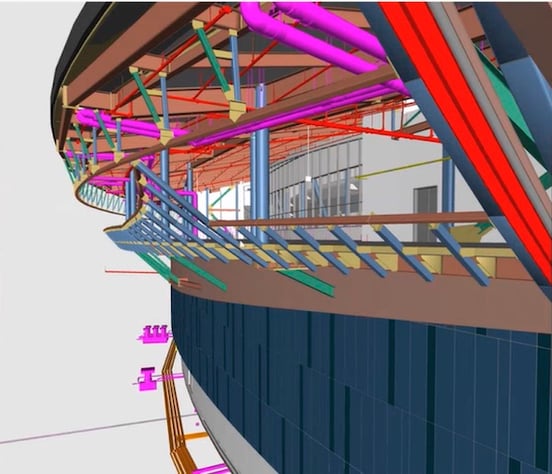
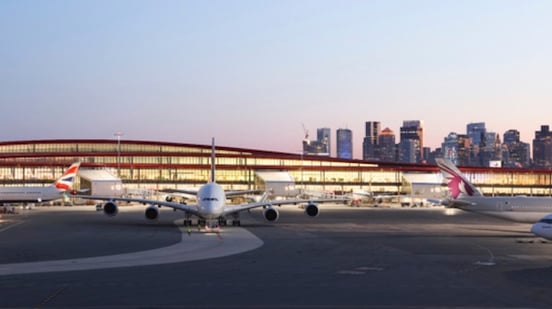
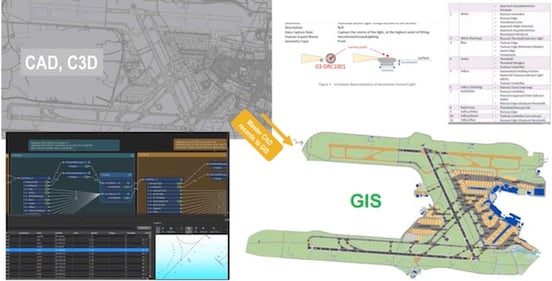
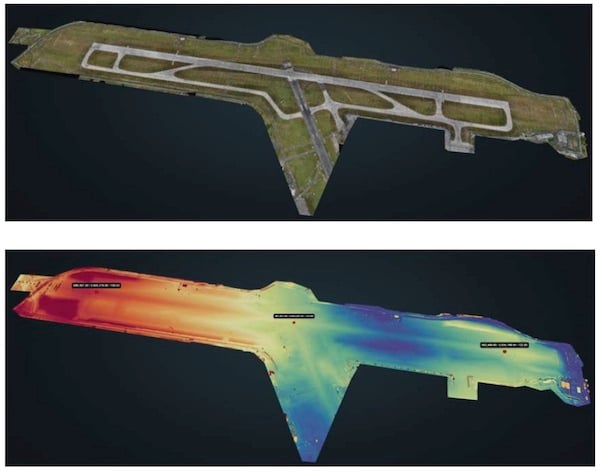




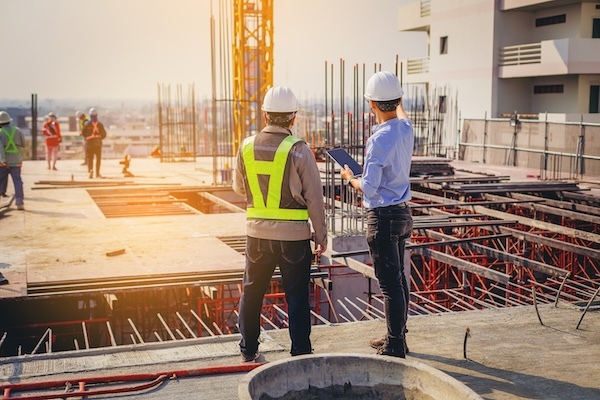

Share This Post